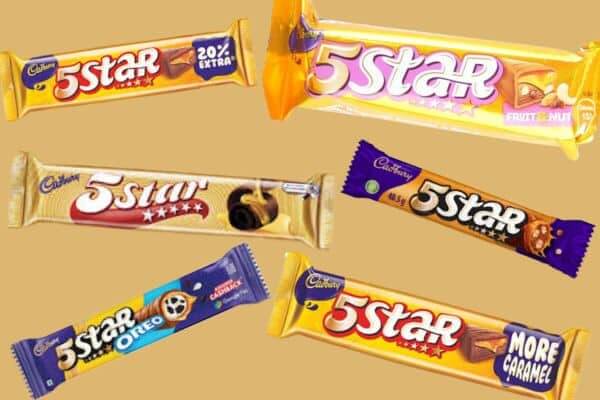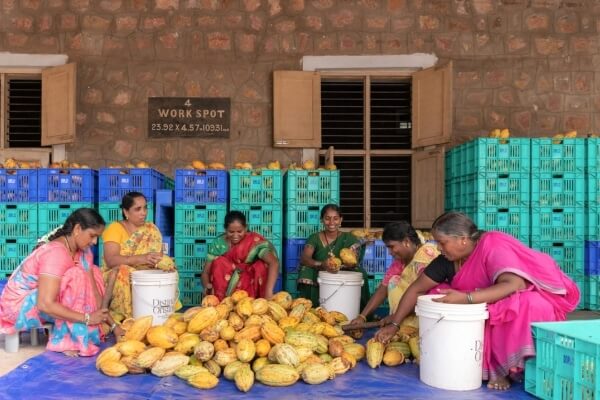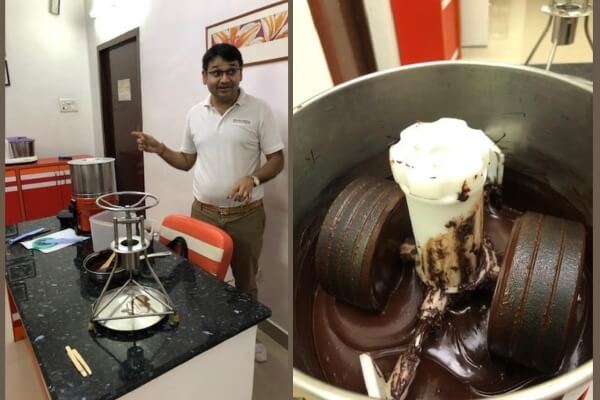Delhi 1996. The year I first tried Indian chocolate, a 5-Star Fruit & Nut bar. Biting into it coated my mouth with a waxy substance and erupted saccharine sweetness on my tongue; any cacao flavour was hardly discernible. Sampling other items from the small range of chocolates then available yielded similar results. I figured the texture came from using compound chocolate, fabricated from vegetable fats and oils and cocoa, to prevent the bars melting in the hot climate; the high sugar content met the local fondness for cloying sweetmeats, and as both ingredients were inexpensive it allowed the product to retail at a widely affordable price. But what did this matter? With so many indigenous Indian confections to enjoy there was no need to eat inferior chocolate. The circumstances also benefited me. When I wanted to bring novel gifts for Indian friends, I brought them good chocolate, but that advantage is no more.

Shahdol, 2014. Shopping in a kirana store in this provincial town in eastern Madhya Pradesh, where I had been a regular visitor, and patron of this particular grocer, for a decade, I noticed the range of chocolates they stocked had suddenly multiplied. These items were mostly international brands and as Shahdol is more Narayan’s Mulgudi than cosmopolitan metro, this provoked my curiosity. 2014 was also the year I published The Penguin Food Guide to India, the first comprehensive work on the country’s diverse regional food. Creating this hefty volume had kept my focus squarely on India’s traditional and community food ways for years and I am not sure if the explosion of chocolate in her metros – dedicated chocolate stores, cake shops and patisseries proffering chocolate rich bakery and desserts – had appeared as speedily as in Shahdol, or if this abundance had crept up over time and I failed to see it. Moreover, all these chocolate goodies were Euro-American derivative, evidencing the intertwined influences of globalisation, increased spending power of Indian consumers, technology and social media shaping India’s foodscape. Then, I noticed artisan/craft chocolate made with local cacao by Indian chocolatiers appearing in stores. This warranted investigation.
View this post on Instagram
When I began asking Indian friends and interviewees about local craft chocolate they tended to a lukewarm appraisal of it, saying it had a ‘gritty’ mouth feel, different to the silky texture of the imported chocolate they had become familiar with. For me, this textural distinctiveness was to be savoured as it reflected the terroir, production methods and ingredients of the products of Indian origin, imbuing it with unique flavours.
Now, there appears to have been a rapprochement: Indians have become enthusiastic about home-grown chocolate and local producers are working to create products that meet textural expectations while retaining idiosyncratic flavours. Manam Chocolate is an example of this.

When Manam Kharkhana, a contemporary chocolate workshop, retail store and café in Hyderabad, opened in 2023, enthusiasm to experience this concept caused such traffic chaos the police ordered it closed for three days to avert further bedlam. This extraordinary response attests to the reputation of Manam, and the Indian appetite for quality chocolate – price is no longer a critical consideration. Manam founder Chaitanya Muppala had already established Almond House, a chain of premium mithai stores, when his entrepreneurial nous and foresight into the transforming preferences of Indian consumers led him to chocolate.

The cacao tree was introduced to India as a plantation crop in the mid-twentieth century for use in industrial chocolate production. Fermenting and drying the seeds (aka beans) of its fruit are critical to developing chocolate flavour but mass-produced brands demand a standardised cacao mass/butter, its source anonymous in the taste, so it is processed in a rudimentary fashion. Muppala recognised that working with the whole fruit, rather than just the bean, could yield finer flavours, leading him to establish Distinct Origins Cacao Fermentery in West Godavari, Andhra Pradesh, where farmers, scientists and technicians work collaboratively to evolve more considered growing, fermenting and drying practices that reveal the bean’s characteristic ‘distinct origins’’. At the Karkhana these beans are crafted into more than 250 different chocolate products, and visitors can watch chocolatiers work through all the stages of this, sample chocolate, attend a workshop and eat and drink in the café from a menu inspired by local ingredients. Time Magazine included Manam Karkhana on its 2024 list of best places to visit in the world, and Conde Nast Traveller ranked it as one of best places to eat in India.
View this post on Instagram
The quality and distinctiveness of Indian craft chocolate is being recognised beyond the subcontinent as Manam and other brands win international awards, a subject requiring a second article. In the meantime, look out for Cocoatrait, launched by Nitin L. and Poonam Chorida in 2019. Committed from the outset to creating sustainable chocolate, they only use Indian grown beans; developed zero waste, zero plastic packaging with minimal graphics to reduce ink use; and proudly enabled other craft chocolate makers.

Fun fact: the mechanised stone grinders long used to prepare idli/dosa batter are now being used by craft chocolate makers around the world to grind and refine cacao beans.
READ MORE: The Taste of India: A culinary tribute to the land we love




